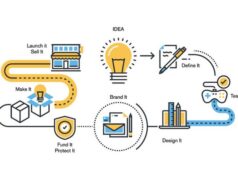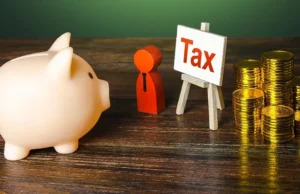
Invention, the engine that propels technological progress and innovation, is as ancient as humanity itself. From the creation of the wheel to the development of artificial intelligence, invention has been the cornerstone of civilization, solving problems, advancing society, and creating opportunities. As a new inventor, your innovative idea might be the next breakthrough that pushes the boundaries of human understanding and reshapes the world.
The journey from inspiration to patent can be a complex and challenging process, fraught with legal intricacies and uncertainties. This comprehensive guide aims to demystify the patenting process, offering a step-by-step roadmap to bring your ideas to fruition, secure your intellectual property rights, and unleash your invention’s potential.
Cultivating Inspiration

The cradle of invention is inspiration. Innovators often find inspiration in the most unlikely places, from identifying problems that need solutions to pursuing personal interests or staying abreast of industry trends. Engage with the world around you; problems are just opportunities in disguise. Embrace your curiosity and remember that every great invention starts as a simple idea.
To nurture and develop your innovative ideas, try different brainstorming techniques, keep an idea journal, and explore various conceptual frameworks. Immerse yourself in diverse disciplines and draw insights from various sources to fuel your creativity. Collaboration can also foster innovation; engage with others to exchange ideas, obtain feedback, and refine your concept.
Conducting Prior Art Research
Before applying for a patent, it’s crucial to conduct thorough prior art research. This involves searching for existing inventions and patents similar to your idea, ensuring its uniqueness and novelty. Prior art isn’t limited to patents; it encompasses any public disclosures related to your invention, including scientific literature, product catalogs, and even internet content.
Navigating the sea of existing ones, outlets such as InventHelp, and literature may seem daunting. Fortunately, several resources can aid your search. Google Patents, USPTO’s Patent Full-Text and Image Database, European Patent Office’s Espacenet, and WIPO’s PATENTSCOPE are some comprehensive databases where you can start your journey. Always consider seeking professional assistance for exhaustive and objective prior art search.
Evaluating Market Potential

The viability of your invention doesn’t solely rest on its novelty but also its market potential. Will it address a pressing need or desire? Is there a target audience willing to invest in your product? These are some questions you need to answer to validate your idea.
To evaluate market potential, conduct market research to understand consumer behavior, needs, and trends. Surveys, focus groups, and competitive analysis can provide valuable insights. Consider creating a minimum viable product (MVP) to gather real-world data and refine your invention before investing in a full-fledged patent application.
Understanding Intellectual Property
As an inventor, safeguarding your invention is paramount, and this is where Intellectual Property (IP) comes in. IP refers to creations of the mind: inventions, literary and artistic works, symbols, names, and designs. Among the various forms of IP, patents are a key protector for inventions.
They provide inventors with the right to exclude others from making, using, selling, or importing their invention for a certain period. This monopoly fosters innovation by allowing inventors to reap the benefits of their creation. The essence of this law is a balance between encouraging invention and disseminating knowledge to the public.
Types of Patents
There are three types of patents: utility, design, and plant patents. Utility type, the most common type, protects new processes, machines, manufactures, or compositions of matter. Design form safeguard new, original, and ornamental designs for an article of manufacture, while plant ones protect invented or discovered, asexually reproduced new varieties of plants.
Each patent type has specific requirements. For instance, a utility one requires your invention to be novel, non-obvious, and useful. Familiarizing yourself with these requirements can help streamline your application process.
Working with a Patent Attorney or Agent

The patenting process involves complex legal nuances that can be challenging to navigate. Working with an attorney or agent can provide invaluable assistance, from conducting a comprehensive prior art search to drafting a robust application.
Patent professionals understand the ins and outs of this law. They can guide you through each step of the process, helping you avoid potential pitfalls and enhancing the probability of your patent grant.
Drafting an Application
A patent application is a crucial document that forms the basis of your copyrights. It consists of several components: claims, specification, and drawings. The claims define the scope of your patent protection, the specification provides a detailed description of the invention, and drawings illustrate your invention.
An effective application should describe your invention thoroughly and highlight its unique features. Precise language, comprehensive coverage of various embodiments, and clear, concise drawings are key. Remember, the better your application, the stronger your product will be.
Filing Options: Provisional vs. Non-Provisional Applications
When it comes to filing your patent application, there are two options: provisional and non-provisional applications. A provisional application is a placeholder, allowing you to establish an early filing date without triggering the patent examination process. It buys you time to refine your invention, evaluate its market potential, or secure funding.
A non-provisional application initiates the formal patent examination process. Choosing between the two depends on your specific needs and circumstances. A provisional application may be ideal if your invention is still in its nascent stages, while a non-provisional application might be better suited for a well-developed invention ready for market.
Navigating the Examination Process

Once your patent application is filed, it enters an examination process. A patent examiner reviews your application to ensure compliance with laws and regulations. The examination process is an interactive one, often involving correspondence (known as “Office Actions”) between the patent office and the inventor or their representative.
Office Actions may contain objections or rejections, requiring responses that clarify or amend your application. Timely and accurate responses can expedite the examination process and increase the likelihood of your product being granted.
Maintenance and Enforcement
Obtaining a patent is just the first step; maintaining and enforcing it is equally important. To keep your patent in force, you must pay maintenance fees at regular intervals. Failure to do so can result in your product expiring prematurely.
Enforcing your patent involves monitoring the market for potential infringements and taking action against infringers. This can involve cease-and-desist letters, negotiations, or even litigation. A robust enforcement strategy can maximize the value of your product and deter potential infringers.
Licensing and Commercialization
Patenting your invention doesn’t necessarily mean you have to manufacture and sell the product yourself. Licensing your patent to others can be a profitable strategy, generating royalties and reducing your commercialization risk.
Commercializing your invention can be a complex process involving manufacturing, marketing, distribution, and customer service. Each step requires careful planning and execution to ensure your invention reaches its full potential and provides a return on your investment.












